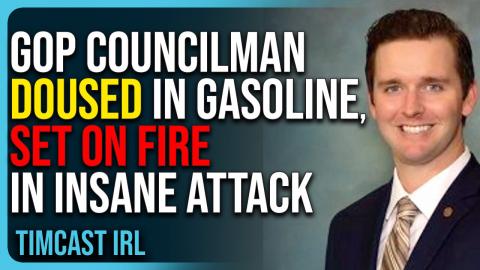The Evolution of Gasoline
▶ Visit https://brilliant.org/NewMind to get a 30-day free trial + the first 200 people will get 20% off their annual subscription
Gasoline is a mixture of light hydrocarbons with relatively low boiling points that, at the time, had no significant commercial value and was even seen as dangerous, due to its high volatility. Because of this, It was initially considered a waste product and was often discarded and simply burned off.
COMPOSITION OF GASOLINE
Despite its public perception, gasoline is not a clearly defined compound but rather a homogenous blend of light to medium molecular weight hydrocarbons. The hydrocarbon types that commonly combine to form gasoline and contribute to its properties as a fuel, are paraffins, olefins, naphthene, and aromatics. Depending on the blend, gasoline can vary anywhere from 32 to 36 megajoules per liter.
EARLY GASOLINE
Early gasoline produced directly from distillation was known as straight-run gasoline. When gasoline containing sulfur is burned are a major contributor to smog, acid rain, and ground-level ozone. These early gasoline blends, by today’s standards would be unusable in the higher compression engines of today as even the most high-test blends would have an octane ratings below 70, with lesser quality blends going as low as 40.
CRACKING
By 1910, the rising demand for automobiles combined with the expansion of electrification, created a flip in the product demands of the petroleum industry, with the need for gasoline now beginning to supersede that of kerosene. Coined the Burton process, this technique thermally decomposes straight-run gasoline and heavier oils, cracking the heavier hydrocarbons and depleting their hydrogen to produce more lighter hydrogen rich hydrocarbons. The instability of fuel was also a concern, as the higher levels of unsaturated hydrocarbons produced by thermal cracking were reactive and prone to combining with impurities, resulting in gumming, further exacerbating the problem.
CATALYTIC CRACKING
In early 1920s, Almer McDuffie McAfee would develop a new refining process that could potentially triple the gasoline yielded from crude oil by existing distillation methods. Known as catalytic cracking, the process heats heavy hydrocarbon feedstock to a high temperature along with a catalyst in a reactor. The catalyst initiates a series of chemical reactions that break the hydrocarbon molecules apart into smaller fragments that are then further cracked and recombined to produce lighter, more desired hydrocarbons for gasoline.
Catalytic cracked gasoline had a significantly higher olefin content, and more branched-chain and aromatic hydrocarbons than thermally cracked gasoline, which raised its octane rating. The catalyzing action also produced a fuel with lower sulfur and nitrogen content, which results in lower emissions when burned in engines.
FLUID-CRACKING
In an attempt to circumvent Houndry patents, Standard Oil began researching an alternative method to catalytic cracking, resulting in the development and fielding of the fluid based catalytic cracking process in the early 1940s. As the catalyst becomes deactivated by build up of carbon deposits caused by the cracking process, the spent catalyst is separated from the cracked hydrocarbon products and sent to a regeneration unit.
HYDRO CRACKING
During this time period, a new type of catalytic cracking process based on decades of research on hydrogenation, a reaction where hydrogen was used to break down large hydrocarbon molecules into smaller ones while adding hydrogen atoms to the resulting molecules. Its efficiency at producing higher yields of gasoline from heavier oil products led to it being adopted on a commercial scale by refineries around the world during the 1960s.
POST LEAD
After the phase-out of lead additives in gasoline, the petroleum industry switched to MTBE. MTBE in particular. This phase out of MTBE led to ethanol becoming the primary oxygenate and octane booster in gasoline by the early 2000s.
ALKYLATION
Beyond additives the process of alkylation also grew in its use to boost octane-ratings. This technique is used to produce alkylates, a high-octane blending component for gasoline. Much like other catalytic process, The acid catalyst is separated and recycled, while the alkylates are separated and unreacted isobutane recycled. The high-octane alkylate is then blended with other gasoline components.
ISOMERIZATION
Another similarly catalytic technique that began to grow in popularity is gasoline isomerization. This process typically focuses on the conversion of low-octane straight-chain paraffins found in light naphtha into branched-chain hydrocarbons that have a higher octane rating.
--
SUPPORT NEW MIND ON PATREON
https://www.patreon.com/newmind
0



 gabfigueiro
gabfigueiro

 Life_N_Times_of_Shane_T_Hanson
Life_N_Times_of_Shane_T_Hanson
 Timcast IRL
Timcast IRL
 Stefan Molyneux
Stefan Molyneux
 Styxhexenhammer666
Styxhexenhammer666

 RT
RT
 HennessyVenom
HennessyVenom



 mrghoster
mrghoster

 Gonzo Og
Gonzo Og



 SoloMan Zone
SoloMan Zone
 RedKnight
RedKnight

Log in to comment
So damn smooth I fell asleep to this video. Musta slept a full six hours, soaking the words in so well my morning piss just now damn near flashed my balls bald as I also took a puff of a smoke.
Damn cat got one helluva wake-up call. https://media.tenor.com/Kp3Q2H....iVUFQAAAAM/cat-on-fi
Interesting video!